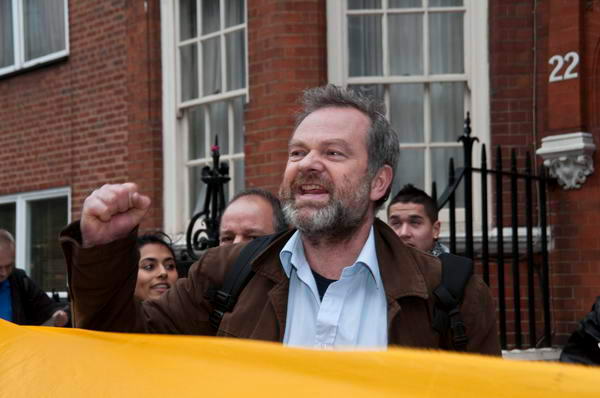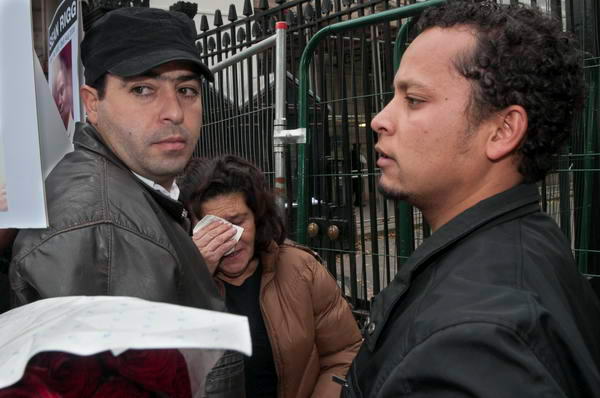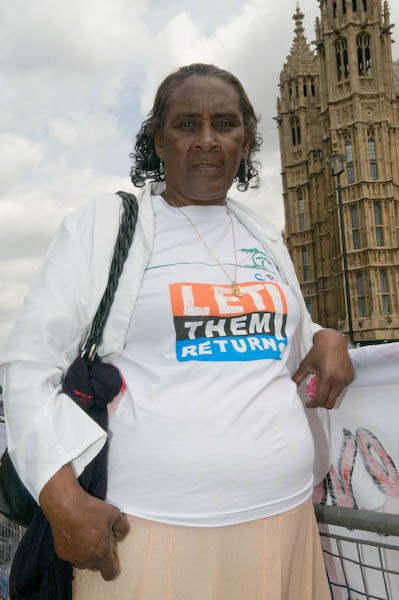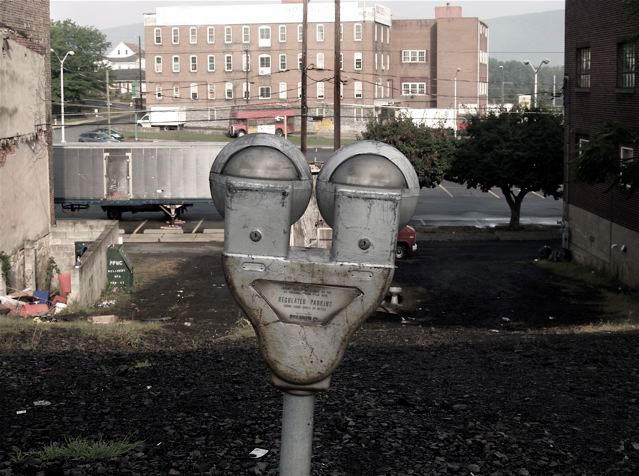‘F8 and be there’ is the traditional advice for photojournalists, but something I’ve rather been ignoring in the last few days.
Well, the ‘f8‘ went some time back when I discovered the freedom of the flexible program ‘P‘ setting along with ‘auto ISO‘ on the Nikon D200 (and now the D300.) Now 99% of the time I rely on the camera to choose an appropriate setting within the fairly wide parameters I set, only bothering to think about that side of things when I know I need considerable depth of field or I’m shooting something moving really fast and have the luxury of time to think about it.
Using auto ISO is just a matter of choosing a suitable base ISO for the light conditions, along with a maximum ISO for me limited by the noise characteristic of the camera – ISO 1600 for the D300 is, so far as I’m concerned, the highest rating where images are generally usable without any special processing to reduce noise. It would be nice to have a system that allowed you to set a minimum shutter speed to use which was dependent on the focal length in use, perhaps following the good old ‘1/focal length*‘ rule, but you have to choose a single shutter speed. My usual compromise is 1/100th, which, thanks to the 18-200mm having vibration reduction, is generally fast enough to get usable results at the long end. But when I’m working in low light and only using wide-angle I happily choose a speed such as 1/30 or even slower. With auto-ISO on and 1/100th set, you do get down to these slower speeds with the lens wide-open at the maximum ISO (1600 in my case) which is probably exactly when you want them in any case.
As I understand it, the camera uses the base ISO you set, varying aperture and shutter speed until it runs out of light at full aperture and your minimum shutter speed, then increases the ISO to keep exposure correct until it reaches the maximum ISO. Then it will let the shutter speed drop below the minimum set. Using fill-flash complicates matters slightly as with that I set a minimum 1/60 second. Anyway, everything usually seems to work pretty well for me however it does it.
Around 1/60 – 1/100th is quite a nice speed for shooting, allowing just a little movement in images which can give them more life.

This picture of a man demonstrating opposite the Colombian Embassy in London on the day of the general strike there (text and more pictures at Support the General Strike in Colombia on My London Diary) is a good example. Looking at the picture at a normal size, it is clear that this man is waving his fist, not just holding it up in the air, though this may not be apparent at this scale. I was using balanced fill flash (at -1/3 stop) , so the shutter speed was 1/60 and the aperture f5.6 at ISO 400 (my base ISO at that point.) It was taken with the 18-200 at its widest setting (where the max aperture is f3.5) and just after 5pm on a dull evening as light was beginning to fade. The fill lifts the central figure slightly from the background and adds a sharp definition to the slightly blurred fast moving fist.
I don’t think I could have made better choices manually – and certainly not in the time available. Leaving the camera to handle things usually gets them done better and lets you get on with taking pictures. But of course it is important to know when and how you do need to take over from the automatic systems, even when such interventions now need to be rather less frequent as systems improve.
Of course, pictures aren’t complete until you – or the camera – processes them. The in-camera jpeg doesn’t look quite the same as the above image. That’s an area where I don’t leave it on automatic, but take the data and handle it how I want in Lightroom. Of course part of that is automatic – camera calibration setting, various presets, but on top of that there are various manual adjustments. For example the flash rather washes out the bright yellow banner – the closest object to it – and a little burning in takes that back to an appropriate level, and the central face was also just a little too bright.
At that event I was obviously there, although ‘be there’ is perhaps more about standing in the right place at events. Often it’s a matter of working out what is likely to happen while you watch what actually is happening, and the pictures of the de Menezes family outside Downing St are a good example of where I made the right decisions. Of course there are many times I get it a little wrong too, but if you don’t think ahead you are less likely to get it right.

More pictures on My London Diary
And on Monday, I went to the ‘Big Blockade’ at Aldermaston knowing that I would be too late to ‘be there’ for the major events that were taking place. But I think there are still a few interesting pictures even if I missed the real excitement. (More on My London Diary.)

But on Tuesday I managed to take not being there to new levels, turning up at entirely the wrong location for a photo-call, having neglected to read my diary properly before I left home. It’s perhaps a pity that this aspect of photography can’t be made more automatic.
*There is some highly technical debate as to whether with DSLRs one should use the actual or equivalent focal length. Which I think is pretty stupid considering it’s only a very rough rule of thumb. Whichever suits you is surely the answer.







